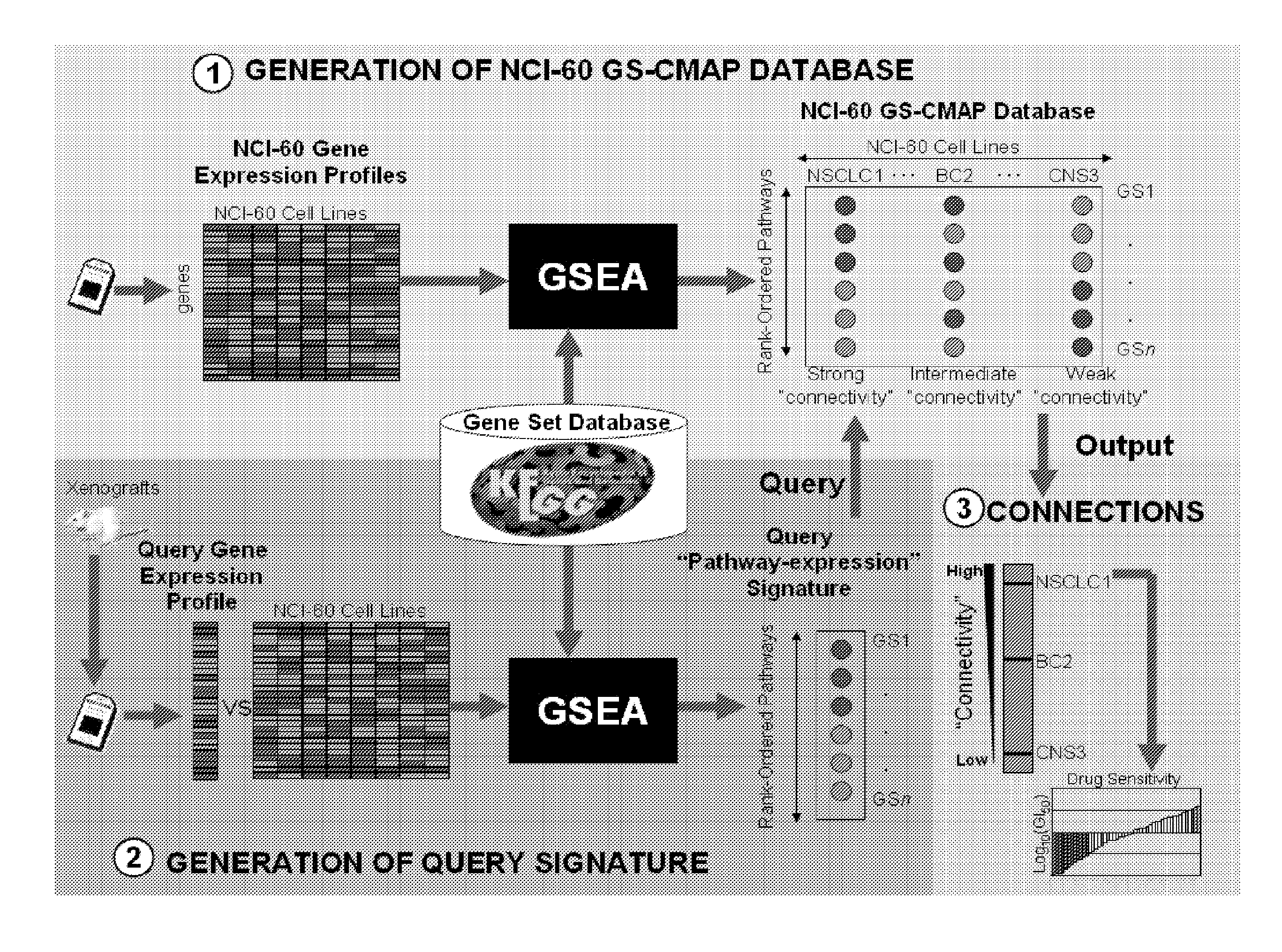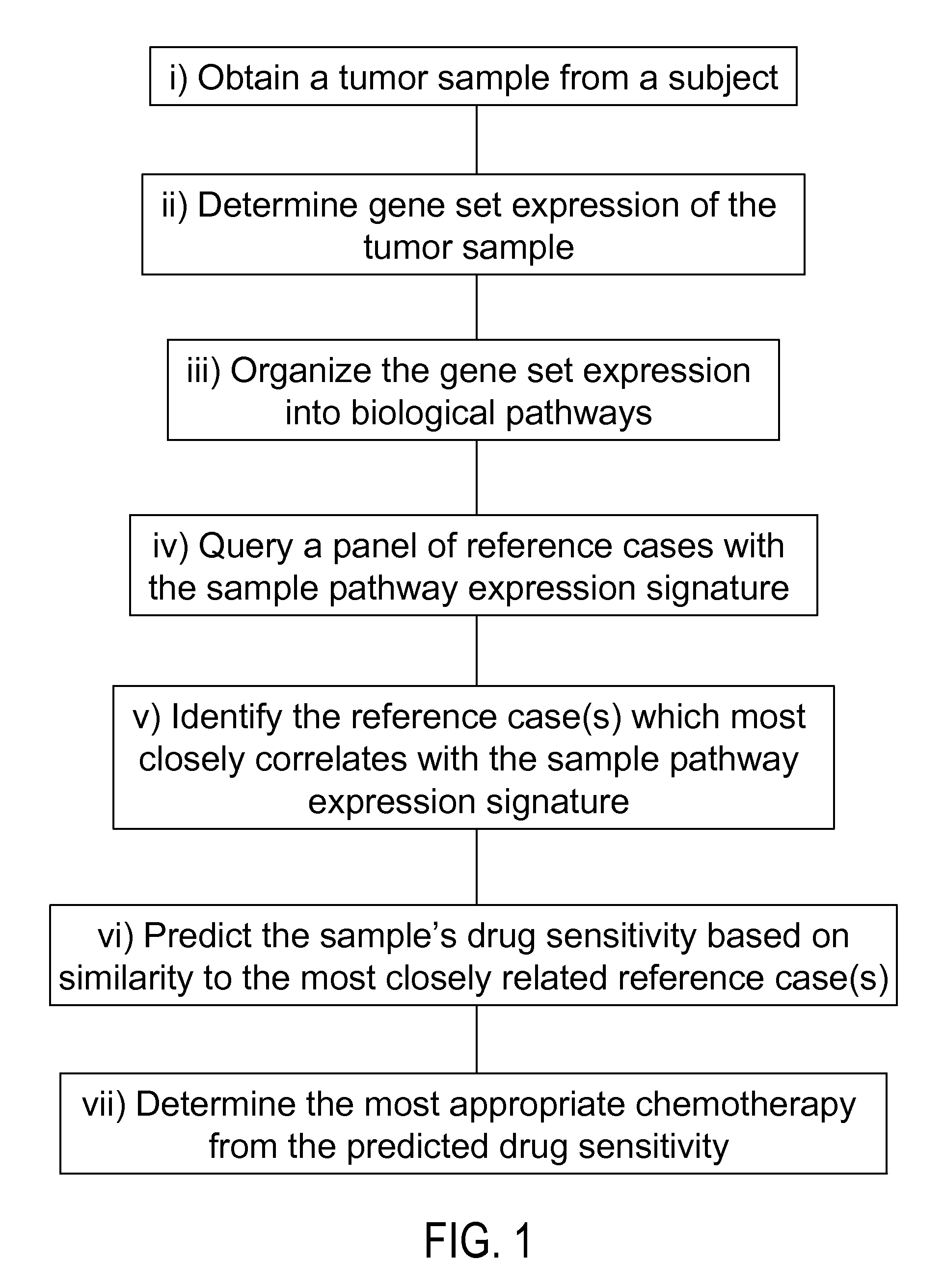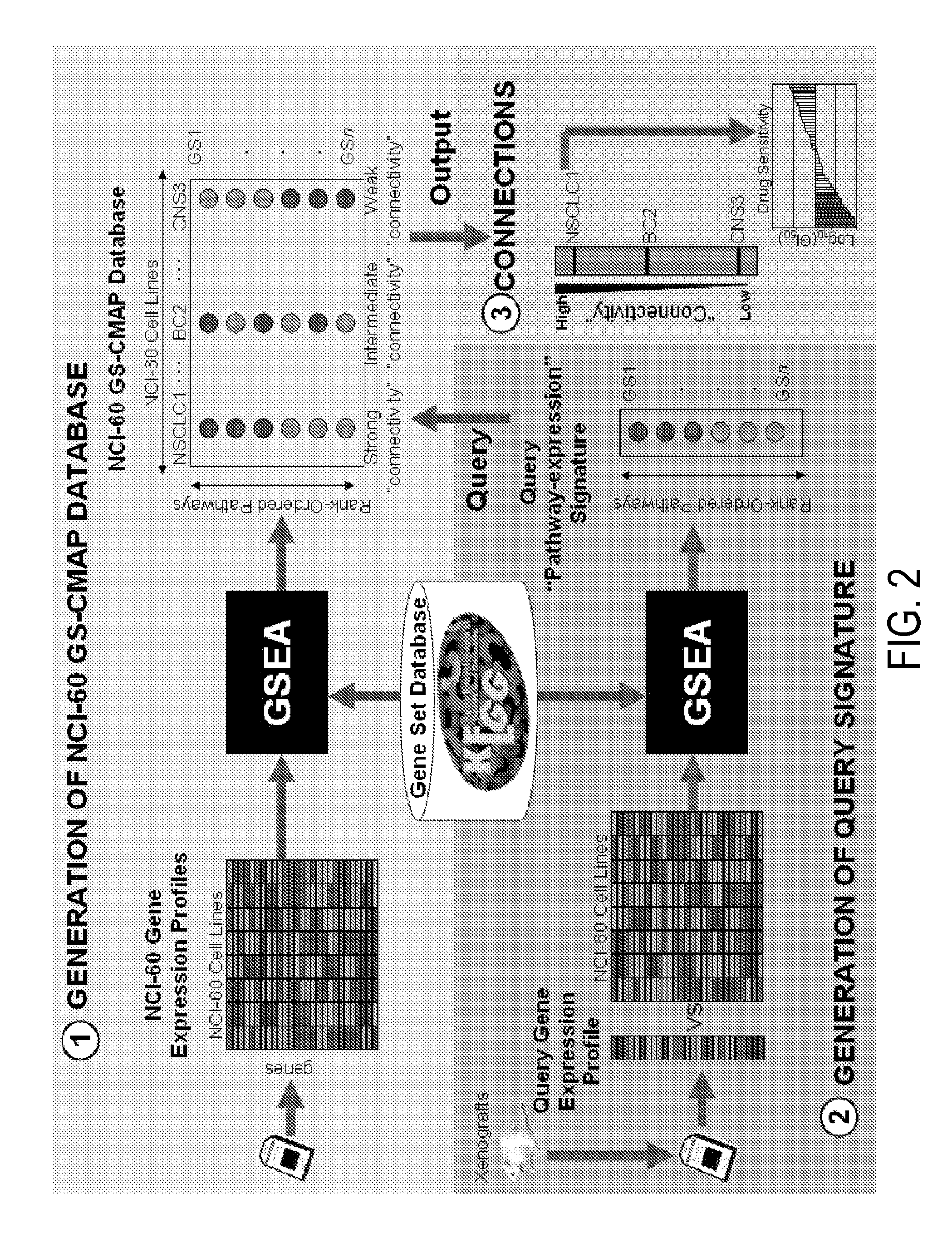Methods to correct gene set expression profiles to drug sensitivity
a gene set and gene expression technology, applied in the field of gene set expression profiles to correct drug sensitivity, can solve the problems of high cost of current approach, poor fit of one-size-fits-all treatment, and inability to achieve meaningful improvement in mortality
- Summary
- Abstract
- Description
- Claims
- Application Information
AI Technical Summary
Benefits of technology
Problems solved by technology
Method used
Image
Examples
example 1
Gene Expression and Gene Set Enrichment Analysis
1. Microarray Analysis
[0159]Tumor cell lines and baseline tumors from xenografts and direct patient samples were profiled using Affymetrix U133 Plus 2.0 gene arrays. This gene array has about 54,000 probes comprising about 20,000 genes. Sample preparation and processing procedure was performed as described in the Affymetrix GeneChip® Expression Analysis Manual (Affymetrix Inc., Santa Clara, Calif.). Gene expression levels were converted to a rank-based matrix and standardized (mean=0, standard deviation=1) for each microarray. Probes from Affymetrix HG-U133 Plus2.0 gene array were mapped to the HG-U133A and HG-U133B probes based on the probe set identifiers.
2. Gene Set Enrichment Analysis
[0160]Gene Set analysis was performed using the Gene Set Enrichment Analysis (GSEA) software Version 2.0.1 obtained from the Broad Institute (http: / / www.broad.mit.edu / gsea). GSEA methodology is described in Subramanian A, Tamayo P, Mootha V K, et al: G...
example 2
Xenograft Treatment
1. Establishment of Xenografts
[0161]Four- to six-week-old female athymic (nu / nu) mice were purchased from Harlan (Harlan Laboratories, Washington, D.C.). The research protocol was approved by the Johns Hopkins University Animal Use and Care Committee and animals were maintained in accordance to guidelines of the American Association of Laboratory Animal Care. Xenografts obtained from F1 mice were excised and cut into small ˜3×3×3 mm fragments and then implanted subcutaneously in a group of five to six mice for each patient, with two small fragments in each mouse (F2) as described above for the original carcinoma. Half of the rest of the carcinoma was cryopreserved in liquid nitrogen and the other half is processed for biological studies. When the carcinoma reached a size of 1,500 mm3, they were excised, cut into ˜3×3×3 mm fragments, and transplanted to the final cohort of mice to be treated with the drugs (F3 and successive passages). Further details of the establ...
example 3
GS-CMAP for TP53 Mutational Status
[0166]In one example, pathway-expression signatures were used to compare oncogene TP53 mutants versus TP53 wild-type in the NCI-60 panel. The TP53 mutational status of the NCI-60 panel was obtained from the Cancer Genome Project of human cancer cell lines database. See Ikediobi O N, Davies H, Bignell G, et al. Mutation analysis of 24 known cancer genes in the NCI-60 cell line set. Mol Cancer Ther 5:2606-12 (2006). 44 of the 60 cell lines have at least one mutation as recorded in the database and were considered mutants. The remaining 16 cell lines have no TP53 mutations and were considered wild-type. TABLE 4 lists the TP53 mutational status for the NCI60 cell lines.
TABLE 4TP53 mutational status of the NCI-60 cell lines.TP53 wild-typeTP53 mutantsNSCLC3NSCLC1BC6RC8NSCLC5NSCLC2BC7ME3NSCLC7NSCLC4BC8ME5CCSNSCLC6OC1ME6BC1NSCLC8OC2PC1OC3NSCLC9OC4PC2LE6CC1OC5CNS1RC1CC2OC6CNS2RC3CC4LE1CNS3RC4CC5LE2CNS4RC7CC6LE3CNS5ME1CC7LE4CNS6ME2BC2LE5ME4BC3RC2ME7BC4RC5ME8B...
PUM
| Property | Measurement | Unit |
|---|---|---|
| size | aaaaa | aaaaa |
| real-time | aaaaa | aaaaa |
| time | aaaaa | aaaaa |
Abstract
Description
Claims
Application Information
 Login to View More
Login to View More - R&D
- Intellectual Property
- Life Sciences
- Materials
- Tech Scout
- Unparalleled Data Quality
- Higher Quality Content
- 60% Fewer Hallucinations
Browse by: Latest US Patents, China's latest patents, Technical Efficacy Thesaurus, Application Domain, Technology Topic, Popular Technical Reports.
© 2025 PatSnap. All rights reserved.Legal|Privacy policy|Modern Slavery Act Transparency Statement|Sitemap|About US| Contact US: help@patsnap.com



